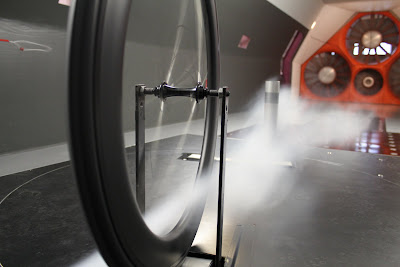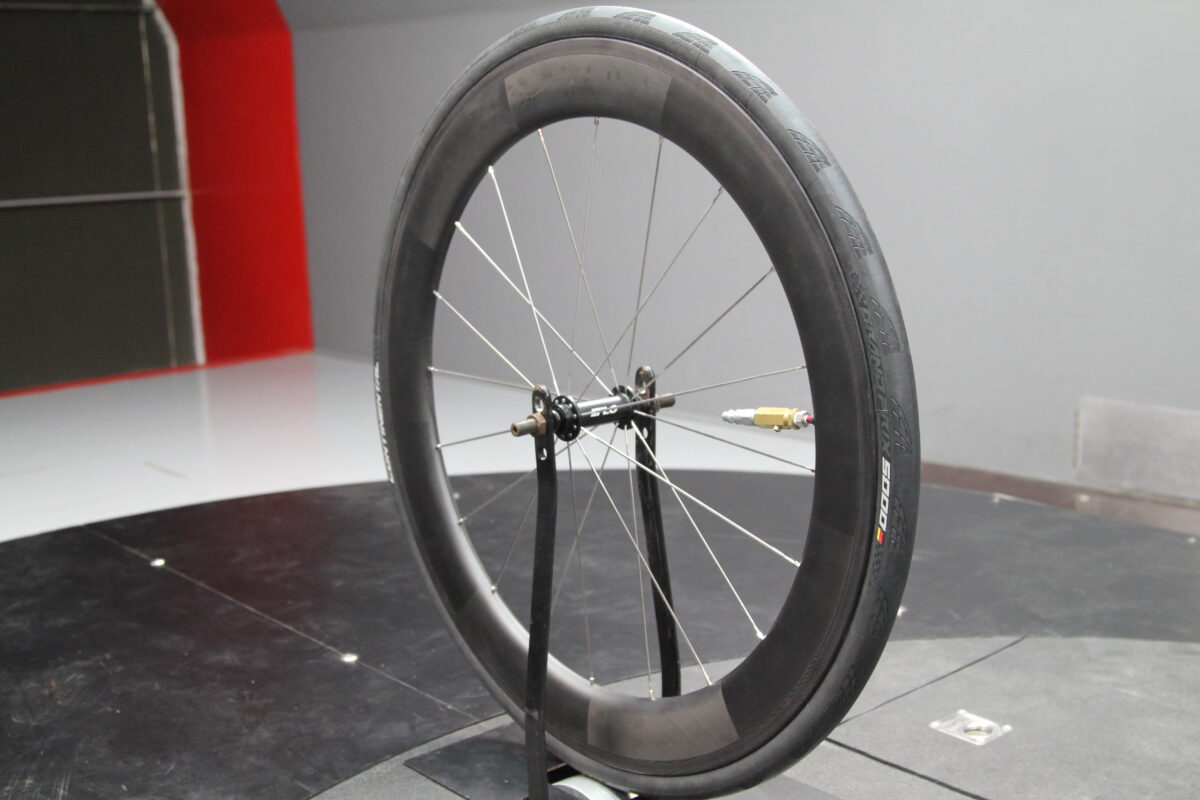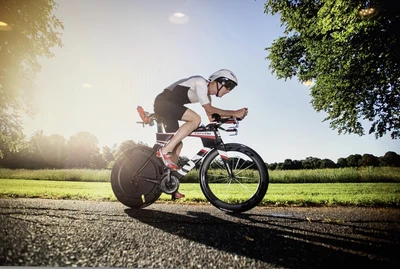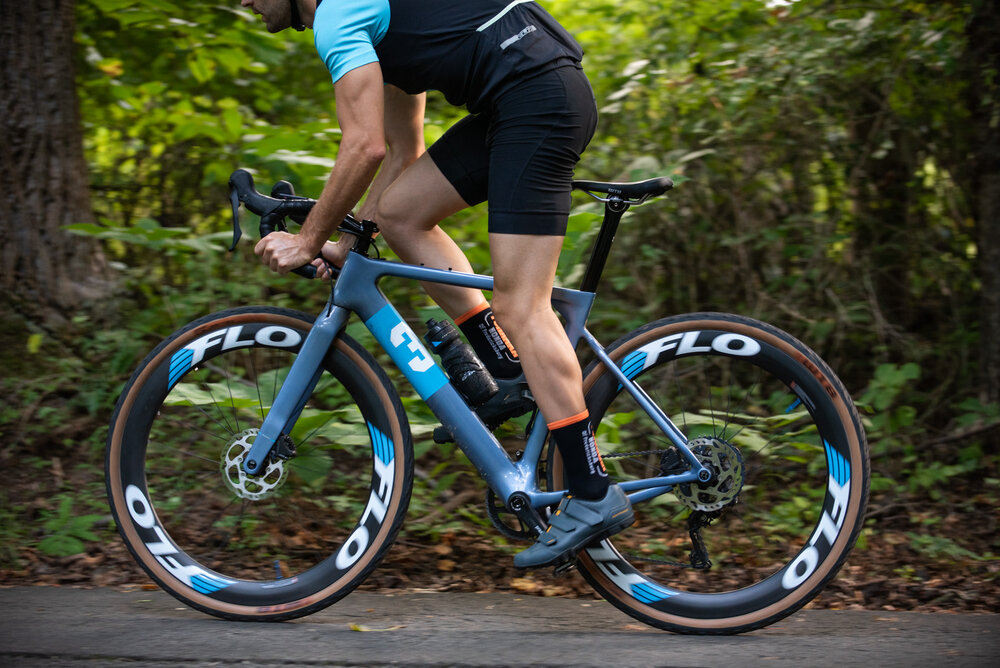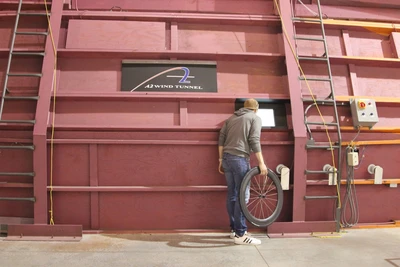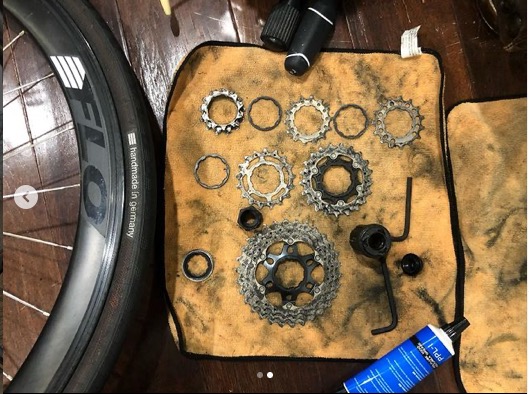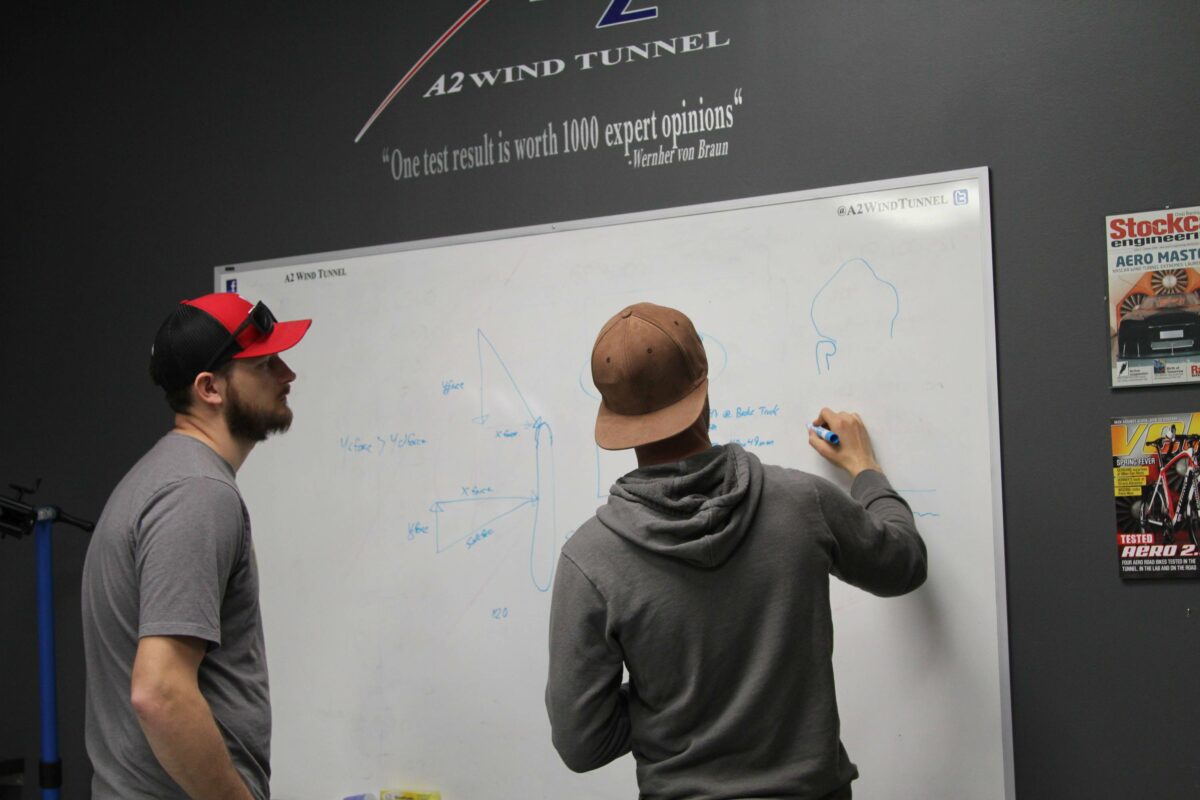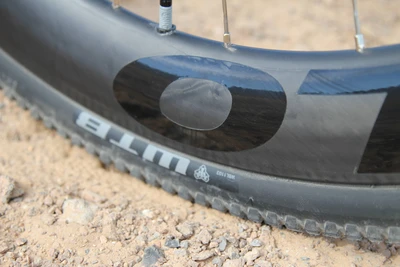So you’re a road racer who wants blazingly fast wheels or maybe a recreational rider wondering, “What’s the fuss about aero wheels?” This complete guide to bike wheels will help you make an informed decision on the best road bike wheels for you.
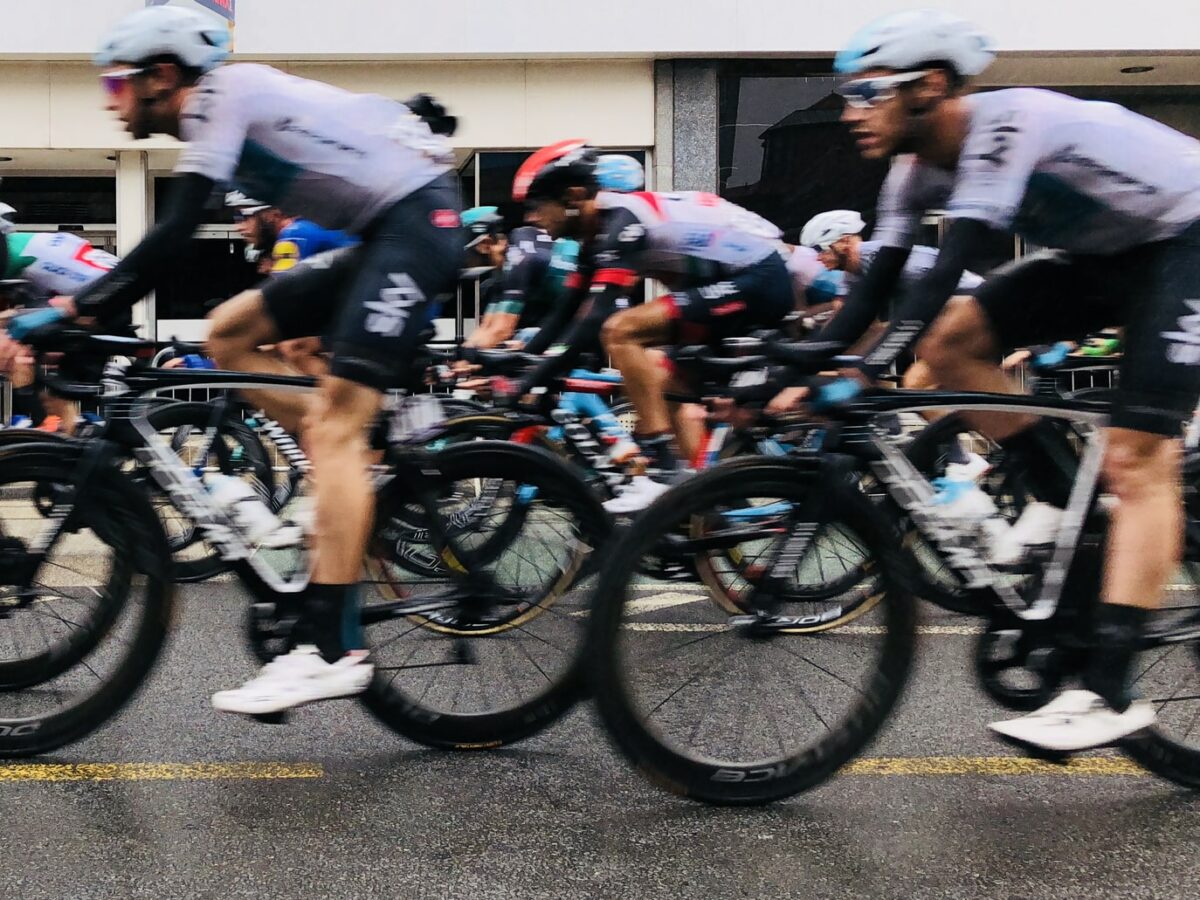
Do aero wheels matter for road cycling?
We hear this question often. Cyclists often assume that aerodynamic performance matters only for time trialists or triathletes. Unless you are a solo breakaway specialist, you might think aero isn’t essential to my racing success. Or, if you cycle for recreation, you could conclude that the aero properties of a wheelset matter little to nothing to me. This is simply not true.
For Racers.

Even when in the shelter of a peloton, the benefits gained from aerodynamic wheels are significant.
Second, the wind is rarely coming straight head-on (aka a 0º YAW angle). The moment a crosswind is involved, aero wheels become even more critical to performance. Most of us aren’t racing in highly organized echelons. When wind hits a cyclist at a YAW angle greater than 0, a road cyclist’s wheelset becomes a crucial limiter or benefiter to improved speed at a given wattage.
The following video is one of the most comprehensive studies ever done to date on the effects of aerodynamics in the peloton.
Third, in real-world road racing, rarely will a racer always be tucked neatly into a peloton. A racing cyclist will often find themselves on the edge of a peloton, leading out at the front, or dropping back and returning in domestique duties. Even if you desire to stay sheltered, so do other riders, and you may get pushed out of your ideal spot. In all of these situations, aerodynamics become crucial. And the need for a solo or small group breakaway session is sure to emerge in a cyclist’s racing career.
During our research in 2105 when we collected yaw angle measurements with a computer-mounted data logger, we noticed that yaw angles stay the same for cyclists in groups. What changes is the relative velocity. While the benefits may be slightly muted while in the group, the benefits still exist.
Doesn’t weight matter more than aero in road races?
Roadies are notorious “weight weenies.” The trend for decades was to sacrifice any aero improvements for the sake of weight. The lightest wheels were automatically thought to be the best. This is an old roadie myth that somehow took hold long before Computation Fluid Dynamics and high-end wind tunnels were available. Now we know differently.
If you would like to dig into the research more, visit these links.
The Great Debate Aero vs Weight Part 1
The Great Debate Aero vs Weight Part 2
The Great Debate Aero vs Weight Part 3
Acceleration and Wheel Weight
Another common belief is that weight is more important for road cyclists. The argument revolves around rotational weight and the stopping and starting of certain road racing events. However, this is not true. When studied, wheels coming from a dead stop to race speed showed that aerodynamics was more important than weight by a factor of 60:1.
Bicycle Wheels Contribution to Road Speed vs Frame
Studies have shown that wheel drag is responsible for 10% to 15% of total aerodynamic drag [Greenwell, et.al] . Road wheels are more important to aerodynamic performance than the bike’s frame. It makes more sense to purchase faster wheels than it does to buy a new aero frame.
Rolling Resistance
When we started FLO Cycling in 2012 our belief was that aerodynamics were the key to making a wheel faster. In 2015 we conducted a study to test rolling resistance and realized that rolling resistance was just as important to wheel speed as aerodynamics? Our research has shown that a wider internal rim width is proven to lower rolling resistance. How much does rolling resistance matter in cycling? We were able to save 2 watts for a set of wheels when considering rolling resistance in the design of the wheels.
Learn more about rolling resistance and impedance.
Go Faster with FLO!
Shop Now
For Recreational Riders.
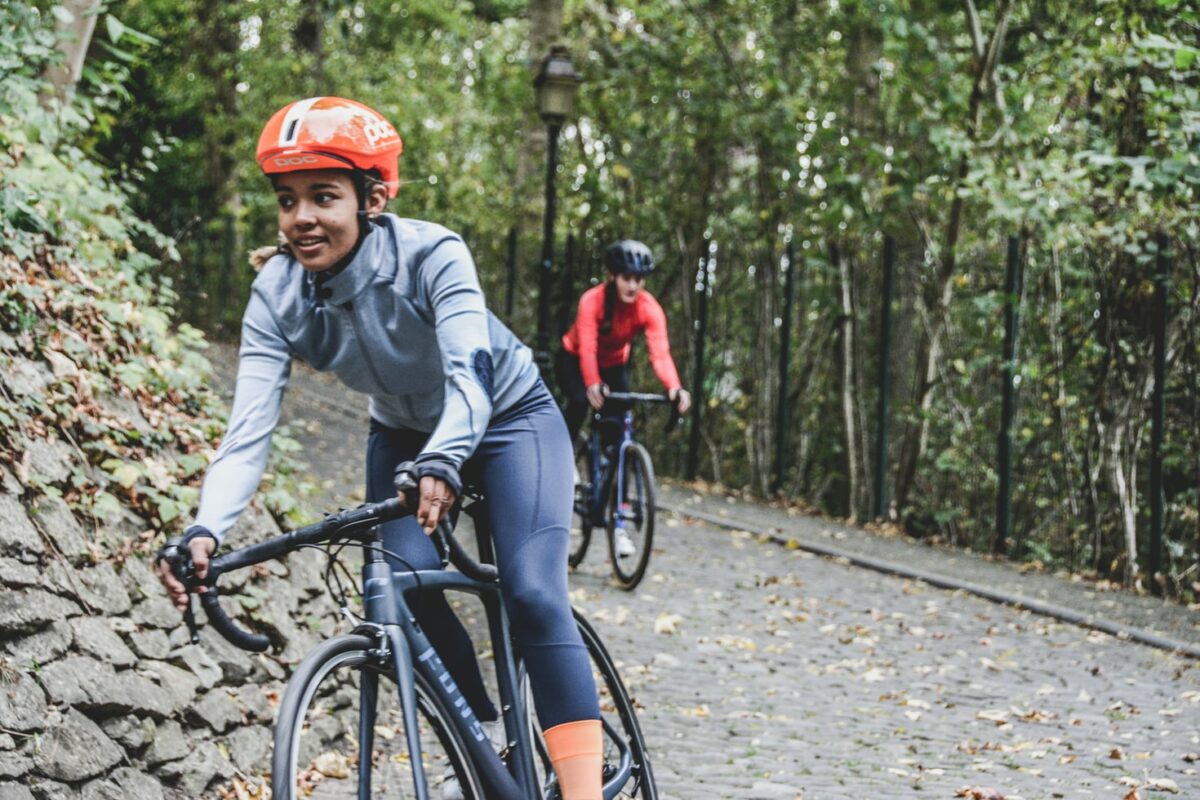
Wrestling your bike throughout a ride or crashing in a crosswind isn’t fun. The aerodynamic properties of a wheel significantly affect the comfort and safety of your ride.
A strong crosswind on a poorly designed wheel can cause your bike to be pushed about, or worse, your front wheel causes the handlebars and fork to twist, causing a crash.
Comfort from the leaf spring effect offered from a deep carbon rim also means your ride on tarmac can be smoother. This improved ride quality is especially important when riding on chip seal or less than ideal surfaced roads.
Why Road Bike Wheel Parts Matter
Road Bike Rims

The Emergence of Carbon
Initially, road bike rims were made of alloy. Aluminum wheels were seen across the UCI’s world tour teams. However, the first carbon wheels emerged in the cycling world just before the turn of this century. As carbon road bike wheels became more durable, pro teams began adopting them. Their initial high costs kept the amateur cyclist from using them for a period of time.
In the 1990s, with the emergence of carbon fiber wheels and frames coupled with aerodynamic testing, there was a discovery that aero might be of greater influence than weight.
Rim Depth and Rim Width
The rule used to be the deeper a rim, the faster it is. However, today we know that a fast wheel aerodynamically uses a combination of width and depth. Computational fluid dynamics modeling and wind tunnel testing have allowed road bike companies like FLO to develop shallower wheels that are faster than previous deeper wheel models. For example, the FLO 77 AS is faster than the FLO 90 A+C, which was already a fast carbon wheel. Rim depth becomes important when strong crosswinds are present as shallower wheels allow riders to fight the wind less and remain in position on the rider’s wheel in front of them.
Learn more about rim width and depth optimization.
With the additional benefits of new discoveries in rolling resistance’s contribution to speed, internal rim width, and tire width have gained importance. These wider rims coupled with wider tires create a larger contact patch and result in lower rolling resistance.
Rims Hooked or Hookless
Hooked rims have a lip on them that allows the tire bead (tyre bead) to sit under the hook and grip onto the rim. Hookless rims don’t have this hook and instead rely on the pressure of the tire itself to hold itself against the rim.
We designed FLO Cycling’s wheels to be hooked. We believe this is the best solution for road cycling carbon wheels. The hooked rim reduces the chances of a tire blowing off to almost nil when riding at high speeds. Today’s road tires have not undergone the same tubeless development seen in mountain bike tires. Hookless works in mountain bike because the tires are designed to be used with tubeless rims. In road cycling, a hookless rim significantly decreases the number of tires you can choose. With tires being so important when it comes to wheel speed, limiting your tires selection isn’t wise today.
Brakes
More than in time trialing or triathlon, brakes and their interaction with a road bike wheel are crucial to the success of a road rider. The ebb and flow of the pack along with more accelerations and decelerations to hold a wheel means the road rider uses brakes more than the TTer or Tri cyclist.
Rim Brakes
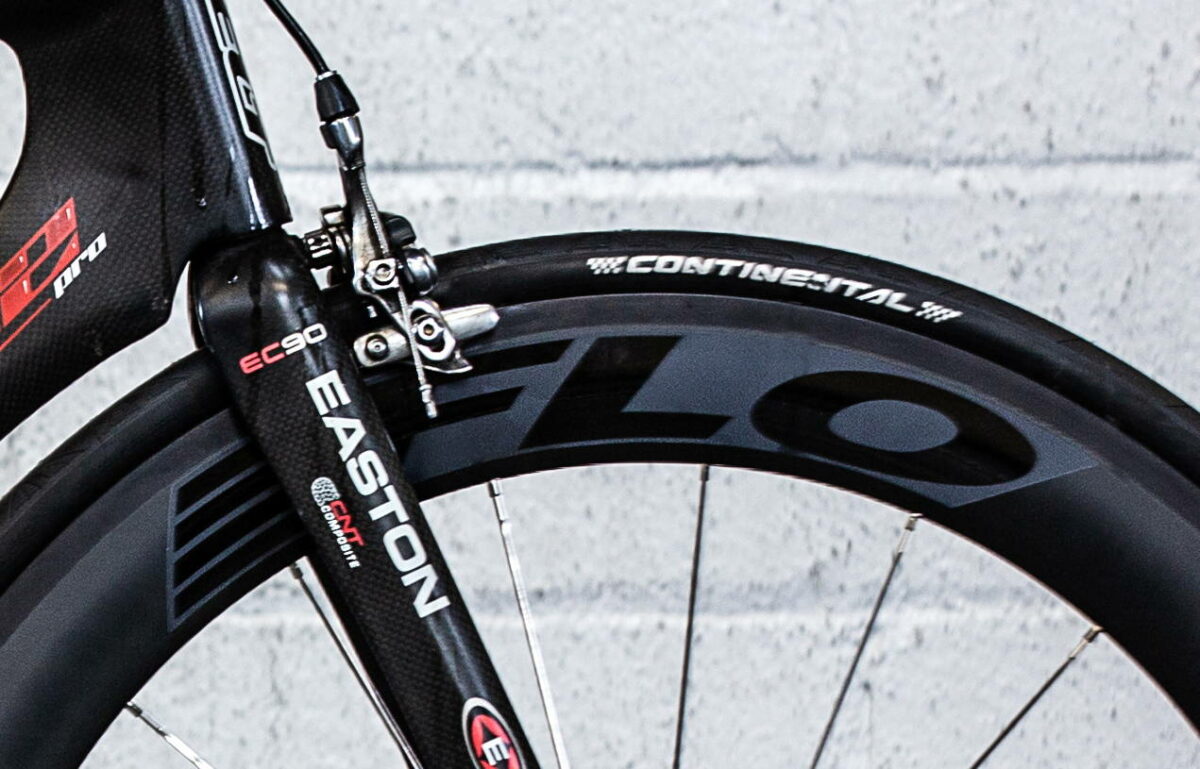
A rim brake uses a caliper with pads that squeeze against the rim when pressure is applied to the brake lever by the rider’s hand. For years, rim brakes were the standard for road riders using aluminum wheels (aluminium wheels for you Brits).
However, early carbon wheels didn’t mix well with rim brakes. The rim brakes created friction on the rim that raised the rim temperature causing the bonding elements of the rim to fail at high heat.
However, current carbon rims coupled with the right brake pads offer solid stopping power and rim brake performance. Several UCI World Tour Teams still prefer rim brakes for the ease and speed of wheel changes and lack of alignment issues (aka the dreaded disc brake rub). Our A+C model of road wheels offers an aluminum rim brake track for the front and rear wheel. The FLO All Sport (AS) wheel line ships in a rim brake and disc brake model. The rim brake wheels ship with pads designed to integrate perfectly with our composite fiber. Stopping power is available even in wet conditions. And FLO Cycling’s carbon is durable and heat resistant, providing you confident braking even when descending Alpe d’ Huez.
Disc Brakes
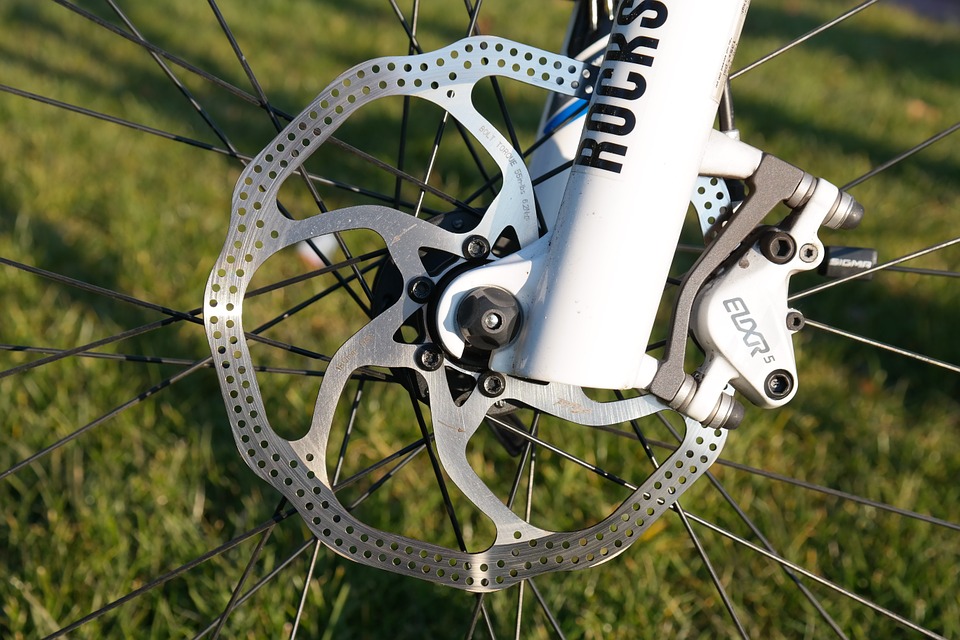
Newer to the road scene are hydraulic disc brakes. While they have been around in the realm of mountain bikes, road riders were slower to adopt them.
Why the Slowness of Disc Brakes By Pro Cyclists
- They produce more drag than rim brake wheels.
- More complex and expensive.
- Sharp and could cut the rider or competitors in a crash.
- Get very hot on a descent.
- Take longer to change a wheel due to the need for thru axles and to align disc between pistons versus quick-release skewers.
- The pro peloton has traditionally been slow to adopt anything.
However, the pro’s sponsor bikes were already behind the technology and pushed their pro teams to ride them. Now, it’s hard to find a rim brake frame with disc brake options seeming to be the norm. The last holdout, World Tour Team Ineos made the shift to disc brakes in the 2021 Paris Roubaix race.
Why Roadies Like Discs
- Stopping power is unmatched.
- Cause no wear to carbon rims.
- Require less hand squeeze pressure to stop.
- Work well in high-speed descending situations.
- Work well in mud and wet environments.
Which to Select For Your Own Road Bike? Read our Disc vs. Rim Brakes article to help you decide. FLO wheels utilize center lock rotors.
Road Bike Tires
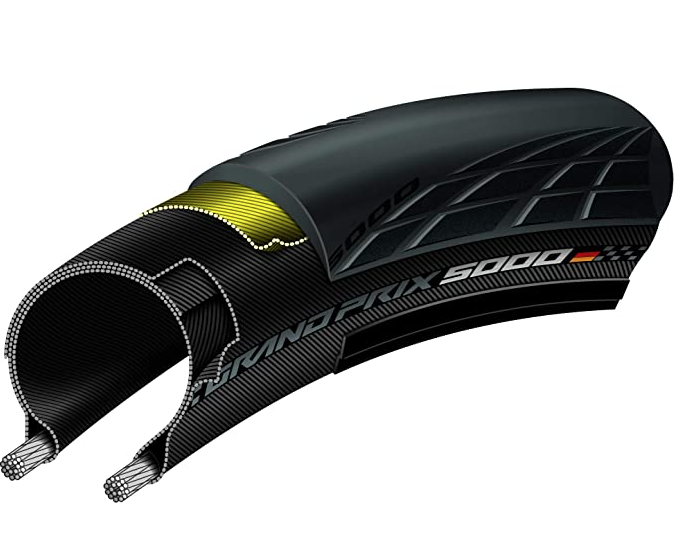
The consensus until about 2000 used to be the skinnier, the better. It was thought that skinny tires were more aero and had less rolling resistance. Computational fluid dynamic modeling and real-world testing have shattered those assumptions.
Wider tires on road wheels are faster….period.
A wider contact patch with the road surface actually lowers rolling resistance and provides increased grip and handling.
Tire pressure management is also key when optimizing for rolling resistance. High pressures have been standard for road cyclists but recent research has proven that lower tire pressures reduce rolling resistance and make you faster. Make sure your frame will accept the width of tire if you desire to run if you plan on running 700c X 28mm or greater.
A wider tire can be run at lower pressure while maintaining the casing tension of the tire. The widens and shortens the contact patch which makes for a faster cyclist. Wider tires also help absorb more vibration from the road. This absorption means more of the wattage applied is shifted to creating horizontal speed rather than overcoming vertical bounce. This also creates a more comfortable road experience, and this is important for recreational cyclists trying to go a bit farther than the last ride or a racer needing less body fatigue and more mental freshness at the end of a race.
The Advent of Tubeless Tires
Road cyclists have started to adopt what mountain bikers have long known – the superiority of carbon clincher tubeless tires over tires with inner tubes. Tubeless tires are lighter, can be run at lower pressures, and are more resistent to pinch flats. While you can run clinchers with tubes on all FLO’s we highly recommend going tubeless. You’ll be impressed at the improved ride quality of your bike wheels once you make the shift to road tubeless.
FLO AS wheels are tubeless ready. They feature a wide brake track width of 28mm and a wide internal rim width of 21mm. The All Sport wheels couple well with 700c tires from 23mm to 32mm (maximum width depends on your frame. Learn more about wheel size and if it will fit your frame here https://blog.flocycling.com/carbon-wheels/wheel-fit-guide-for-flo-all-sport-series/). We even ship custom rim tape and tubeless valves to make sure your tubeless tires stay sealed and inflated.
Freehubs
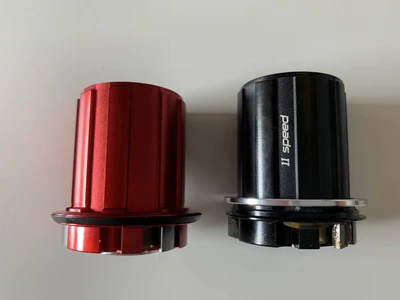
You’ve heard the clicking sound of someone coasting on their bike next to you. This is the freehub in action.
Freehubs are what sit around the axle allowing the wheel to rotate when you stop pedaling. The freehub is the ratcheting mechanism attached to the rear hub of most modern derailleur bike hubs. The hub is called “free” because it allows the wheel to rotate forward without the pedals spinning (as opposed to a fixie hub). When the pedals are engaged, the pawls (or teeth) of the freehub body engage and transfer the power to the rear cassette, allowing the rider to propel the bike.
As a side benefit, that clicking is also a strong audio signal to riders around you that you a near.
Higher-end wheels have smoother bearings systems to reduce friction in the hub.
Spokes
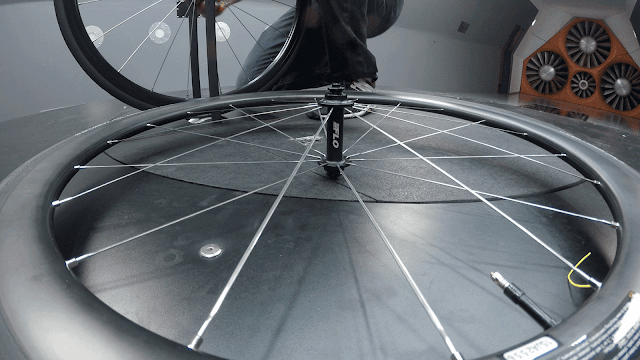
Spokes connect the hub to the rim. Spokes support the weight of the cyclist, transfer energy from the rear hub to the rim, and keep the wheel true.
Road bike spokes and the wheel build contribute to the feel and aerodynamic properties of the wheel. Round spokes have a higher CDA than do aero spokes.
FLO Cycling uses Sapim CX-Ray spokes. Sapim uses high-grade stainless steel which have a high tensile strength. These spokes have proven to be aerodynamic, durable (highest fatigue test values in the market), and corrosion-resistant.
Axles
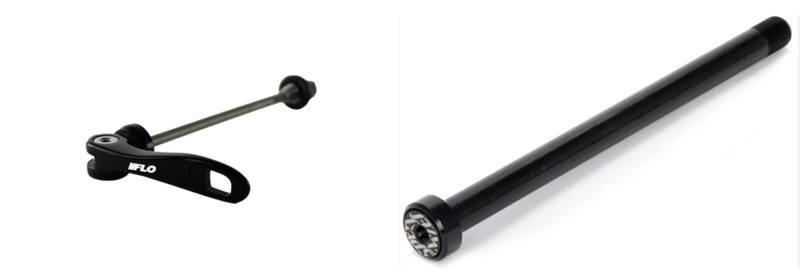
Axles connect the hub to the bike at the front fork and rear stay. There are two types of axles. Quick-release skewers and through axles. See the difference here.
Disc brake wheels tend to use thru-axles to better handle the torque generated at the center of the wheel by the disc.
FLO Wheels work equally well with thru axles or skewers. We even have hub adaptors if your frame’s proprietary thru axle diameter isn’t the standard 12 mm.
Go Faster with FLO!
Shop Now
Road Bike Wheelset FAQs
Do I need to save my FLO Carbon Bike wheels for Road Races?
No. We created our FLO wheels to be durable enough both to train and race on with no worries. Why should you only use your best set of road bike wheels for only a few races per year? FLO allows your bike’s performance to better every single ride.
What type of bike drivetrains do FLO wheels work with?
FLO’s work with all major component groups including Shimano, SRAM, and Campagnolo. Cassettes from each manufacturer will fit, and work well with, our wheels.
Isn’t FLO Cycling that triathlon brand?
While FLO has a huge tri following, our FLO Factory team is chocked full of road racers, including cyclists riding crits, stage races, one-day classic type rides, and even ultras. Our wheels work equally well for triathletes and roadies alike. Aerodynamics and rolling resistance don’t care what type of cyclist you are.
How are FLO wheels more affordable than other brands?
Simple. We chose a direct-to-consumer model for our road bike wheels bypassing the retail middle man. You get high-end wheels engineered to rival or surpass the top brands, not a high-end price tag.
What rim size options are available in road bike wheels?
Typically road wheels come in rim depths from 30mm-90mm (and of course disc wheels for time trials). Riders select a wheel that allows them to handle crosswinds comfortably while gaining the maximum aerodynamic advantages possible.
FLO Cycling makes wheels in the following depths for road cycling:
All Carbon 700c AS Line
30mm
45mm
64mm
77mm
Disc
Carbon A+C Line (carbon fairing covering aluminum rims with aluminum brake track)
60mm
90mm
Disc
A Single Road Bike Wheel Upgrade Cost Comparison (Front Only)
| Brand + Model | Price for Front Wheel Only | Savings if Using FLO 77 AS Instead |
| FLO 77 AS | $724 USD | — |
| Zipp 808 | $1300 USD | Save $581 |
| Enve 7.8s | $1,275 USD | Save $556 |
| Hed RC8 Pro | $1,400 USD | Save $501 |
| DT Swiss ARC 80 | $1,046 USD | Save $321 |
| Swiss Side HADRON² Ultimate 800 | $1,006 USD | Save $287 |
If you buy a front and rear wheelset, that amount of savings doubles! You CAN get speed at less cost.
Which road bikes do FLO wheels work well with?
FLO’s work well with carbon-framed road bikes like:
- Specialized Tarmac
- Trek Emonda
- Cannondale SuperSix
- Giant TCR Advanced
- Canyon Aeroad
- Cervelo S5
- Scott Foil
- Pinarello Dogma
- BMC Teammachine
- Factor Ostro
- Ridley Helium
- Bianchi Oltre
- Specialized Roubaix
- Ridley Fenix
- Trek Domane
- Any other carbon frames with clearance.
FLO’s also work well with aluminum-framed road bikes like:
- Cannondale CAAD
- Specialized Allez
- Trek Emonda ALR
- Giant Contend
- Canyon Endurace AL
- Boardman SLR
- Any other aluminum frames with clearance.
FLO’s work with steel-framed and titanium bikes like:
- Eddy Merckx Strada
- Ritchey Logic Road
- Cinelli XCR
- Masi Gran Criterium Moderno
- Ribble Endurance TI
- Van Nicholas Ventus
- Any other steel or titanium frame with clearance.
- Any other steel frames with clearance.
If you are concerned with clearance on your specific frame, don’t hesitate to get in touch with us. We are here to help!
Which FLO road bike wheels should I get?
Consider the conditions in which you most often ride. If you are a lighter rider and face heavy crosswinds and/or spend a great deal of time climbing, a front and rear FLO AS 49 AS is the ticket. (For the record, most pro teams run in the 50ish mm deep realm for a typical race.) Want a little more aero advantage and are a small rider? Consider a front FLO 64 AS and a rear FLO 64 AS. Finally, if you want maximum aero advantages, you can opt for a rear FLO 77 AS coupled with a front FLO 64 AS or, if you are experienced and don’t often face blistering crosswinds, even a front FLO 77 AS.
Front Road Bike Wheel Selection Chart
| Gender | Weight | Handling Ability | FLO 49 AS | FLO 64 AS | FLO 77 AS | FLO 60 A+C |
| Male | < 170lbs | Novice or Hates Crosswind | BEST | GOOD | NOT RECOMMENDED | GOOD |
| Male | < 170lbs | Experienced and Okay With Crosswind | FAIR | BEST | GOOD | BEST |
| Male | > 170lbs | Novice or Hates Crosswind | GOOD | BEST | NOT RECOMMENDED | BEST |
| Male | > 170lbs | Experienced and Okay With Crosswind | NOT RECOMMENDED | GOOD | BEST | BEST |
| Female | < 120lbs | Novice or Hates Crosswind | BEST | FAIR | NOT RECOMMENDED | FAIR |
| Female | < 120lbs | Experienced and Okay With Crosswind | BEST | GOOD | FAIR | GOOD |
| Female | > 120lbs | Novice or Hates Crosswind | BEST | GOOD | NOT RECOMMENDED | GOOD |
| Female | > 120lbs | Experienced and Okay With Crosswind | GOOD | BEST | GOOD | BEST |
Rear Road Bike Wheel Selection Chart
| Gender | Weight | Handling Ability | FLO 49 AS | FLO 64 AS | FLO 77 AS | FLO 60 A+C | FLO 90 A+C | FLO DISC (Any Model) |
| Male | < 170lbs | Novice or Hates Crosswind | FAIR | BEST | GOOD | BEST | GOOD | FAIR |
| Male | < 170lbs | Experienced and Okay With Crosswind | FAIR | GOOD | BEST | GOOD | BEST | GOOD |
| Male | > 170lbs | Novice or Hates Crosswind | FAIR | GOOD | BEST | GOOD | BEST | GOOD |
| Male | > 170lbs | Experienced and Okay Crosswind | NOT RECOMMENDED | GOOD | BEST | GOOD | BEST | GOOD |
| Female | < 120lbs | Novice or Hates Crosswind | BEST | GOOD | NOT RECOMMENDED | GOOD | NOT RECOMMENDED | NOT RECOMMENDED |
| Female | < 120lbs | Experienced and Okay With Crosswind | GOOD | BEST | GOOD | BEST | GOOD | GOOD |
| Female | > 120lbs | Novice or Hates Crosswind | GOOD | BEST | GOOD | BEST | FAIR | FAIR |
| Female | > 120lbs | Experienced and Okay With Crosswind | NOT RECOMMENDED | GOOD | BEST | GOOD | BEST | GOOD |
Road Bike Wheelsets: The Most Impactful Upgrade
Other than more intelligent training/nutrition/sleep, there are numerous upgrades you can make to “purchase speed” as a cyclist: shifting from a regular helmet to an aero helmet, wearing a super-tight, custom skinsuit, or buying a hyperbaric chamber. You could also spend thousands of dollars purchasing a number of questionable supplements that contain who knows what.
However, no purchase affects the every-second ride quality, comfort, and speed as upgrading to a better road bike wheelset. Every second you spend on your bike, you spend on your wheels. At FLO Cycling, carbon wheels are our passion. Your road bike will perform better with our carbon wheels.
Get:
- Improved ride comfort.
- Improved ride speed.
- Improved handling and safety in crosswinds.

